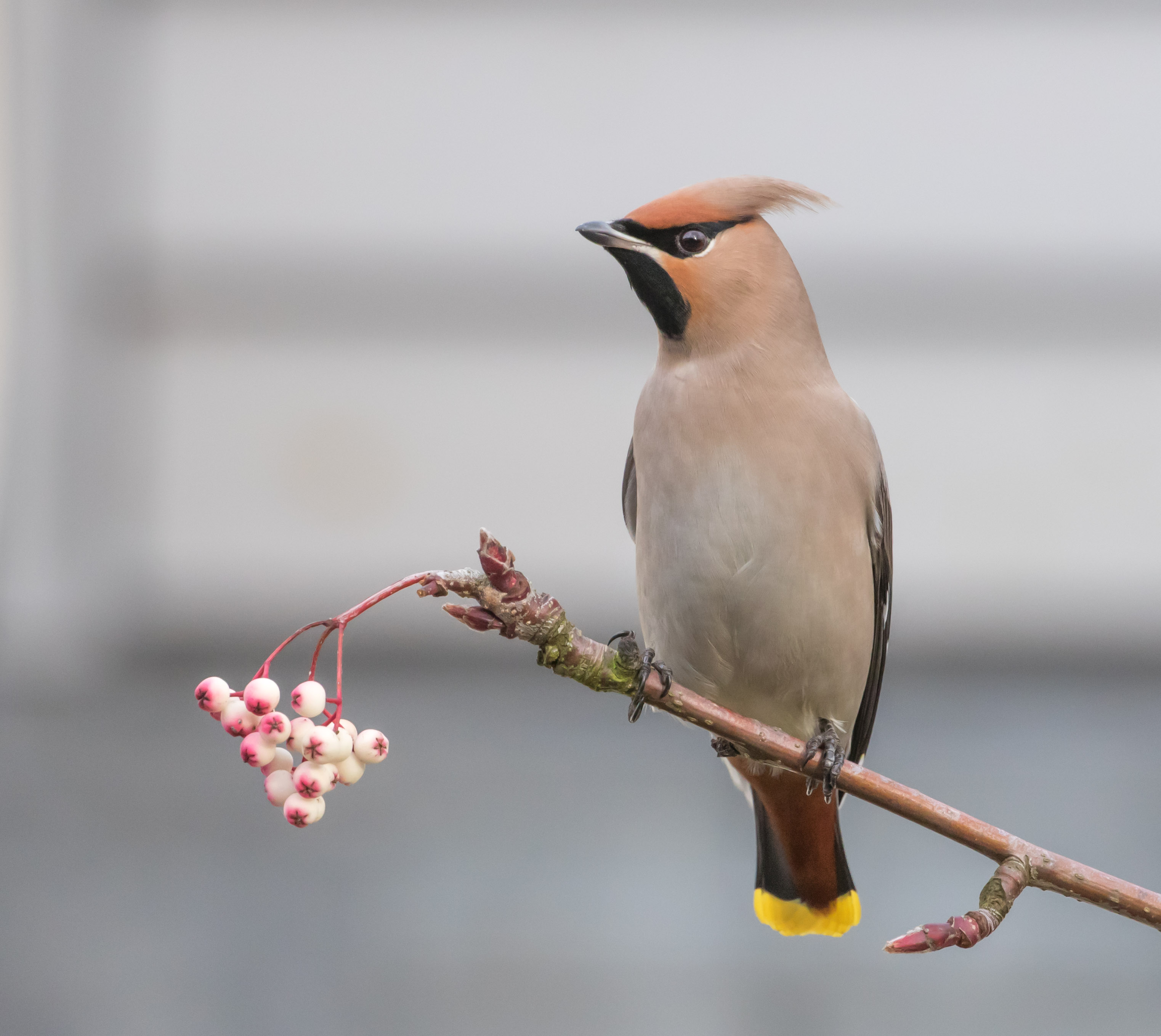Yesterday afternoon I finally had the sort of intimate views of Waxwings that I have been trying to achieve for years. The three birds that I found on Saturday afternoon were feeding on a tiny sorbus shrub in one of the front gardens on Kennett Road, despite a constant stream of pedestrians passing by. The Waxwings spent most of their time in the tall tree behind Bateman Street, but once every half an hour or so would drop down onto this shrub, giving amazing views at eye-level:


One of the great things about Waxwings, together with being beautiful and charismatic birds, is that they are full of features – the black eye-mask and throat patch, their fabulous crest:

The red undertail coverts and that startlingly yellow tail tip:


The folded wing with two white wing bars and the line of first yellow tips, then white, running down the black wing:


The picture above, whilst not the best portrait, shows some of the other features that make Waxwings such fantastic birds:
Where to chuck berries?
Clearly Waxwings are berry specialists, at least in winter. In spring and summer they switch to feeding on insects, caught by gliding out on flycatching sorties. But wintertime is berrytime. The most efficient way to collect berries is to have the ability to store a few berries from every trip down to the favourite berry bush, rather than to having to pick a single berry on every trip. These berries are not immediately swallowed but are stored in the crop, an expanded muscular pouch that is part of the oesphagus. You can make out the outline of at least two berries in the crop of this Waxwing:

The crop is a transparent structure and, as this amazing video shows, berries can be clearly seen in the crop underneath the neck feathers in Waxwings.
Waxy wings
In the photo above the red waxy tips to the secondary feathers can also be seen in the open wing. It is these feathers that give Waxwings their name. They are also visible on the closed wing:

These feathers are unique in birds. They appear to play an important role in indicating the sex and maturity of Waxwings – older males have more red tips and longer red tips. This paper on the subject reveals more: Waxwings begin courtship and pair bonding on their wintering grounds in late spring, before they migrate to their breeding areas. Male Waxwings do not appear to defend breeding territories in the summer. Therefore pair selection must depend on the individual characteristics of birds, rather than being based on an ability to defend a suitable breeding and feeding territory. Female Waxwings do appear to select mates on the basis of this plumage feature. Older males breed earlier and have larger clutches than younger males, with fewer red tips. Waxwings have developed “delayed plumage maturation”, a plumage feature that becomes more prominent in older birds. This illustrates success in older birds, but also protects young males from too much aggression from established males in the breeding season. Those red tips also look pretty cool.
Never satisfied
The final feature of Waxwings is their very unpredictability. Most winters there are few, if any. Then, once every few years, they stream out of Russia and Scandinavia and hundreds, and in some years many thousands, cross the North Sea to arrive in the UK. This apparently occurs when the berry crops in those countries is poor, but Waxwing irruptions are not fully understood. This article illustrates that some birds that winter in the UK can spend other winters far to the east.
In true unpredictable style, a quick search revealed that there were no Waxwings in Headington this morning. The sorbus shrub had kept them going for a couple of days, the Waxwings have moved on to their next berry bush somewhere, as always leaving us wanting more.
